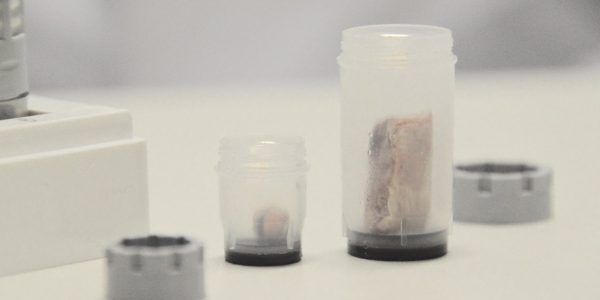Frozen tissues work well for molecular genetic analysis, especially if they are submerged in liquid nitrogen, which is called flash freezing. Then, the tissue is placed in an ultra-cold freezer at -80 degrees Celsius. Fresh frozen tissues can be prepared with liquid nitrogen and a “-80” freezer. IHC analysis is also possible using frozen tissue array samples, as they preserve proteins in their native form. These “native” proteins that have not been denatured can be extracted in an active form for biochemical analysis.
However, tissue quickly degrades at room temperature and doesn’t store well in a household or food freezer that is more “-20”. It is important to freeze it as soon as possible and keep it at a very low temperature. This can be problematic for biopsy tissue as surgeons might not have liquid nitrogen available to flash freeze the excised tumor material. Furthermore, if you are looking to know about the pros and cons of frozen tissue samples then visit https://www.geneticistinc.com/blog/the-pros-and-cons-of-ffpe-vs-frozen-tissue-samples.

Image Source: Google
You will also need a dedicated ultra-low temperature freezer to ensure that the tissue is frozen at all times. The preservation of frozen tissue archives is vulnerable to power outages and mechanical failures. Sometimes, careless technicians might leave valuable samples on their lab benches or forget to close the freezer door. Biobanks are a more recent method of freezing tissue and generally contain smaller amounts.
Therapeutic Areas:
- Oncology tissue samples
- Inflammation & AID
- Neurological Diseases / CN
Normal Human Tissues:
- Adrenal
- Blood cells
- Bladder
- Bone marrow
- Breast
- Cerebral cortex
- Cerebellum
- Endothelium
- Fallopian tube
- Colon
- Kidney
- GI tract
- Fat
- Heart
- Lung
- Liver
- Lymph node
- Muscle
- Ovary
- Pancreas
- Parathyroid
- Pituitary
- Placenta
- Prostate
- Skin
- Cross-section of the spinal cord
- Spleen
- Testis
- Thyroid
- Ureter
- Uterus (cervix, endometrium)